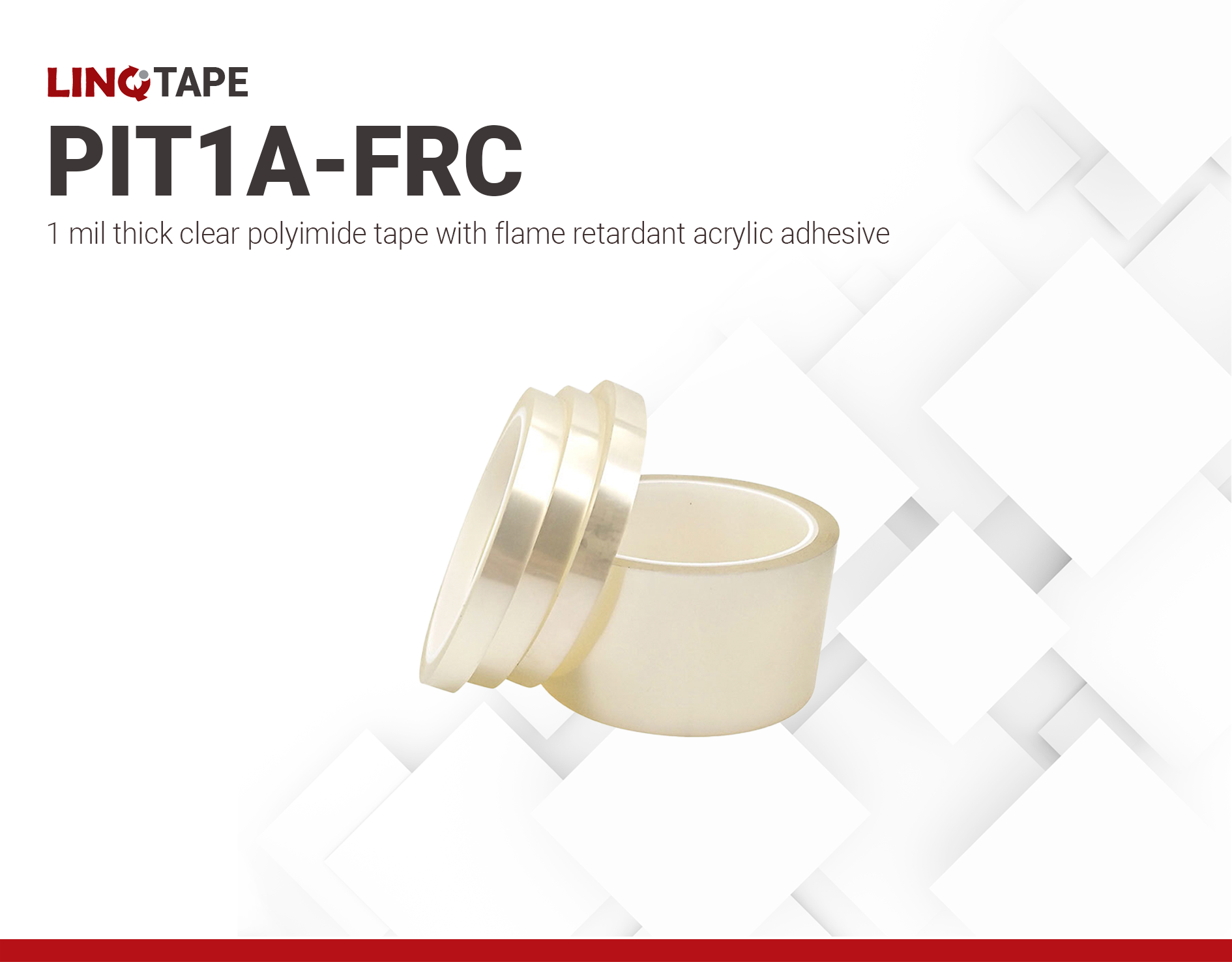PIT1A-FRC | 1-mil Clear Polyimide (Kapton) tape with FR coating
- 1mil Optically Clear Polyimide
- Flame retardant acrylic adhesive
- 4000 V Breakdown Voltage
Product Description
LINQTAPE™ PIT1A-FRC is a clear high-temperature resistant polyimide film designed for both permanent and temporary bonding in many high temperature applications. It’s high breakdown voltage (4,000V) and high temperature resistance make it ideal for applications that require the balancing of multiple properties over a wide temperature range. The FR series has a special flame-retardant acrylic adhesive, which is rated for applications anywhere from –29 °C to 177 °C. Some applications include gold fingers for protection in wave soldering, ground barrier and phase insulation, and outer wrapping for small bobbin wound coils.
LINQTAPE™ PIT1A-FRC film comes in 33 meter (36 yard) rolls of varying widths. LINQTAPE PIT-A polyimide films with acrylic adhesive are available in a range of thicknesses, starting from 0.5 mil (12.7 µm) thickness and up. Custom thicknesses are available upon request.
Technical Specifications
| General Properties | |
| Adhesive Layer Adhesive Layer A layer that is applied to one surface or both to bind items together and resist their separation | Acrylic |
| Chemistry Type | Polyimide |
| Color Color The color | Clear |
| Film Thickness Film Thickness Film thickness is the thickness of a backing film without taking into account any coatings or adhesive layers. It is measured in micron and the conversion factor to mil is 0.039. | 25.4 µm |
| Special Layer | Flame retardant |
| Total Thickness Total Thickness Total thickness is taking into account all the films, coatings, adhesives, release liners and special layers and is the maximum thickness of a film or tape. | 63.5 μm |
| Mechanical Properties | |
| Adhesion Strength Adhesion Strength Adhesion is the bond strength measurement of a coating to a substrate. When an adhesive is bonded to an item or surface, numerous physical, mechanical and chemical forces come into play, which may have an effect on each other. | 14 Oz/in |
| Elongation Elongation Elongation is the process of lengthening something. It is a percentage that measures the initial, unstressed, length compared to the length of the material right before it breaks. It is commonly referred to as Ultimate Elongation or Tensile Elongation at break. | 45 % |
| Tensile Strength (Thin Film) Tensile Strength (Thin Film) Tensile strength determines the resistance of a material to break under tension and it measures how much elongating load (or tensile stress) it can handle before fracture. To make it simple, it measures how much force we have to apply when pulling apart a material before it breaks. | 35 N/cm |
| Electrical Properties | |
| Breakdown Voltage Breakdown Voltage Breakdown voltage is the minimum voltage necessary to force an insulator to conduct some amount of electricity. It is the point at which a material ceases to be an insulator and becomes a resistor that conducts electricity at some proportion of the total current. After dielectric breakdown, the material may or may not behave as an insulator any more because of the molecular structure alteration. The current flow tend to create a localised puncture that totally alters the dielectric properties of the material. This electrical property is thickness dependent and is the maximum amount of voltage that a dielectric material can withstand before breaking down. The breakdown voltage is calculated by multiplying the dielectric strength of the material times the thickness of the film. | 4000 V |



